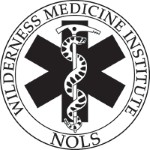Hands-On Training
By GARY HABER
ghaber@tampatrib.com
TAMPA -- As a student at Binghamton University in New York, Ari Rubinstein got hooked working for the student-run ambulance service on campus.
Rubinstein, who is from Sarasota, is a licensed emergency medical technician. He plans to go to medical school to become a cardiovascular surgeon, which would give his family its third-generation physician.
After Rubinstein, 22, transferred to the University of South Florida last year, he began thinking that a student-run emergency medical service could be terrific. Accident victims and people suffering from strokes and heart attacks would get help from student responders before EMTs and paramedics arrived. Students interested in medical careers would get hands-on experience.
Rubinstein and friend Aitan Zacharin, a USF student, helped start the University Emergency Medical Services Association at USF last year and want to bring a student-run ambulance service to USF. About 200 colleges and universities offer similar services.
The student organization recently launched an eight-week program to train USF students to become certified as first responders to assist EMTs and paramedics at car accidents and other emergencies.
Twenty-six students are enrolled in the inaugural course, which consists of 40 hours of classes over five Saturdays and eight hours of ride-alongs with Tampa Fire Rescue squads and crews from American Medical Response, an ambulance service and provider of emergency medical services. The students also will assist paramedics and EMTs from Hillsborough County Fire Rescue at Sun Dome events.
The students learn how to assess emergency medical problems and stabilize patients. They hone important hands-on skills such as how to insert a breathing tube or immobilize a person who has a spinal injury.
There are no membership dues for the group and no cost for the class except textbooks. The students don't receive course credit.
Their dedication in giving up their Saturdays has impressed the professionals.
"They jump right in," said Michael van Hoek, the course's instructor and the clinical and education services coordinator for American Medical Response's West Florida division. "They're a very dedicated group."
The campus group started in August 2004 with 75 members. It has grown to 150 members. Many of the students plan to attend medical school, but others run the gamut from criminology to political science.
"It's definitely a gateway into the medical world," said Zacharin, a senior from Aventura. Zacharin is a licensed EMT who plans a career as an emergency physician.
Rubinstein and Zacharin said the hours the students devote to training weed out those interested only in having something to put on a medical school application.
The students take their role seriously, said Stephen Poff, a board-certified emergency physician at USF Student Health Services and the group's adviser.
"This is different from any other student group," Poff said. "They're doing patient care."

